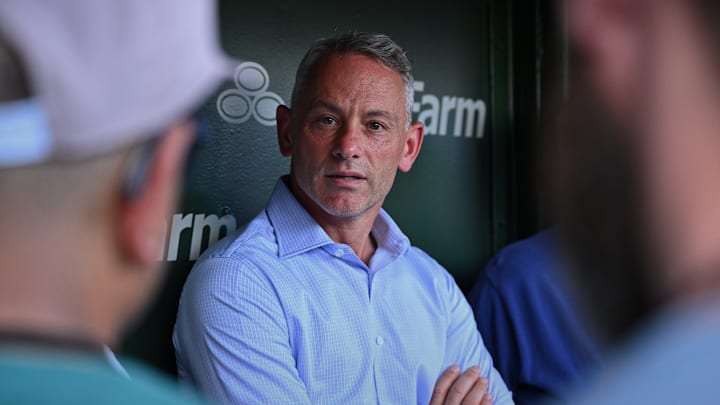Whether intentional or not, Chicago Cubs president of baseball operations Jed Hoyer seemed to confirm that the Cubs will be exceeding the first level of the luxury tax threshold by the time that the 2024 season concludes.
Not only was that revelation from Hoyer significant, it highlights an error in roster construction that should be fireable offense.
The Cubs are likely going to be over the competitive balance tax at the end of this season, Jed Hoyer said.
— 670 The Score (@670TheScore) August 15, 2024
“The CBT is not a governor,” Crane Kenney says in looking ahead to 2025.
Listen to full interview with Hoyer and Kenney:https://t.co/ZB7l4UU7Hj pic.twitter.com/cXeJWqSiaF
Let's offer a quick reset. The first level of the MLB's luxury tax in 2024 is set at $237MM. But, it's important to distinguish that if teams go over that mark, there is a significant gap before reaching the next level of tax. In the first year, if a team goes over the luxury tax, they will be taxed an additional 20 percent. The reason why, if a team is going over the tax, it doesn't make sense to stop just over the threshold is because that surcharge does not kick in until a team goes over the luxury tax by $20MM. The surcharge is 12 percent if a team is between $20MM and $40MM, a 42.5 percent surcharge if they exceed the threshold by $40MM, followed by a 60 percent surcharge if they exceed
The point is that if a team is going to exceed $237MM with its payroll commitment, it shouldn't stop until it reaches the second level—$257MM. This is pretty indicative of the Cubs' front office's errors if, in fact, they expect to exceed the luxury tax this year.
A quick look at the Cubs' payroll numbers and it becomes clear that the team operated this past offseason with the luxury tax in mind. Spotrac has the Cubs' current payroll commitments at just over $233MM, and it's essentially the same with FanGraphs' Roster Resource.
The suspicion is the creativity of Cody Bellinger's contract likely is what resulted in the team expecting to go over the luxury tax but even if that's the case, considering the moves they've made in-season, chances are the Cubs will wind up slightly over.
But, if the Cubs' front office miscalculated, then that only heightens the significance of their failures with the 2024 roster construction. If nothing else, Hoyer's comments on Thursday confirmed that the team does not view the first threshold of the luxury tax as a cap. That's problematic when looking at the Cubs' roster construction last offseason considering the team entered the season with a clear need for another hitter and legitimate reliever in their bullpen.
It's more confirmation that Hoyer loves to live on the margins despite the fact it's a strategy that the Cubs shouldn't feel obligated to use. The Cubs have the money to live comfortably in the luxury tax, especially when they were entering a season that was supposed to be the first of their contention window. Instead, this potential accounting error will need to be answered more clearly by Hoyer when he speaks with reporters at the end of the season.
